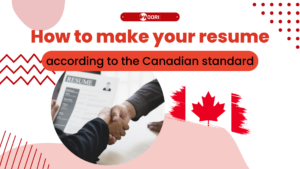There are 2 common types of resumes:
- Chronological
- Functional
Chronological Resume
A chronological resume is time-based. It is organized by the positions you have held, in order of time. You list your most recent position first. These resumes are best if you have a lot of experience in your field. They are also better for people who do not have periods of time when they were not working.
This is an example of a Canadian-style chronological resume:
Functional Resume
A functional resume is skills-based. It is organized by skills that you gained in your previous work. Functional resumes are best if you:
- Are a recent graduate
- Have major time gaps in employment
- Are changing careers
This is an example of a Canadian-style functional résumé:
Many settlements or employment agencies can give you information and advice about your résumé, and how to create resumes for specific fields. To find help, go to Services Near Me and search for employment services in your area.
Keep your resume short. In Canada, most people have a resume that is 2 pages long. Keep it to 1 page if you finished school recently or do not have a lot of experience.
Change Your Resume for Each Job
Career experts recommend that you customize your resume for each job, especially at the beginning of your resume. General or generic resumes do not work in today’s labour market.
For some jobs, you can change a few sentences to focus on certain skills and accomplishments. For others, you may need a completely new resume.
Include Volunteer Work
You should include your volunteer experience in the section on work experience. It is important to talk about what you have done. It does not matter if it was paid or unpaid work.
Use Social Media
Many employers cross-reference your resume with your online presence. LinkedInis a popular business-related social networking site. When you update your resume, make sure to update your LinkedIn profile too.
Employers may also look for you on other social media tools, such as Facebook,Twitter and blogs. First impressions are important – if you dont want a potential employer to see something, dont make it publicly accessible or put it online at all.
Formatting Hints
Format is critical. Your resume should be organized, neat, clear, and consistent in formatting (e.g., font and bullets). Dont forget that the page layout in Canada is Letter not A4. Absolutely NO pictures of the candidate or other personal information such as age, weight, height, martial status, Social Insurance Number (SIN), etc.
Use Keywords
It is important to use keywords in your resume. You might see them in the job posting that you are answering and on related companies websites.
Use the “Action and Result” Method Of Writing
How this works is that you describe what action (or tasks) you carried out, and then you describe what the end result was. This is important because many times candidates will lists their tasks but leave out what the end result was and why it is important.
Use Numbers To Back Yourself Up
Employers tend to favour descriptions that have some sort of a number attached to them, a quantitative measure if you will. For example, it’s better to list “ Attended an average of 5 tables per daily 6 hour shift” as opposed to “Attended tables during daily shifts”.
Use the “Action and Result” Method Of Writing
How this works is that you describe what action (or tasks) you carried out, and then you describe what the end result was. This is important because many times candidates will lists their tasks but leave out what the end result was and why it is important.
Use Numbers To Back Yourself Up
Employers tend to favour descriptions that have some sort of a number attached to them, a quantitative measure if you will. For example, it’s better to list “ Attended an average of 5 tables per daily 6 hour shift” as opposed to “Attended tables during daily shifts”.
Look It Over
Look over your résumé before you send it. Make sure the company names, job titles and dates are accurate. Print out your resume to see how it looks when printed.
For More Information
- Monster.ca Resume Centre – Many tips for creating great résumés.
- Resume Writing – Detailed articles and infographics on how to create an effective resume.





